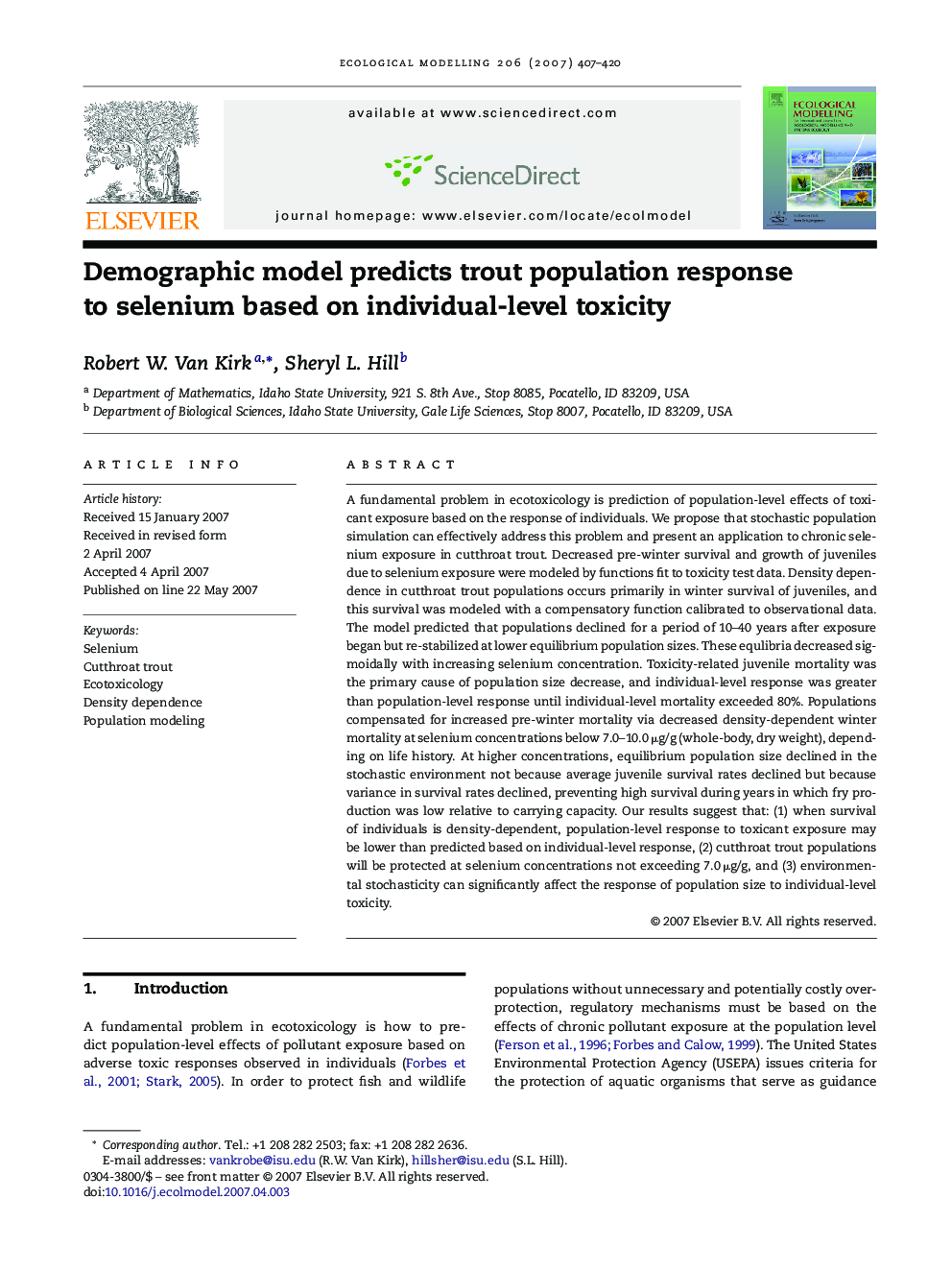| Article ID | Journal | Published Year | Pages | File Type |
|---|---|---|---|---|
| 4378652 | Ecological Modelling | 2007 | 14 Pages |
A fundamental problem in ecotoxicology is prediction of population-level effects of toxicant exposure based on the response of individuals. We propose that stochastic population simulation can effectively address this problem and present an application to chronic selenium exposure in cutthroat trout. Decreased pre-winter survival and growth of juveniles due to selenium exposure were modeled by functions fit to toxicity test data. Density dependence in cutthroat trout populations occurs primarily in winter survival of juveniles, and this survival was modeled with a compensatory function calibrated to observational data. The model predicted that populations declined for a period of 10–40 years after exposure began but re-stabilized at lower equilibrium population sizes. These equlibria decreased sigmoidally with increasing selenium concentration. Toxicity-related juvenile mortality was the primary cause of population size decrease, and individual-level response was greater than population-level response until individual-level mortality exceeded 80%. Populations compensated for increased pre-winter mortality via decreased density-dependent winter mortality at selenium concentrations below 7.0–10.0 μg/g (whole-body, dry weight), depending on life history. At higher concentrations, equilibrium population size declined in the stochastic environment not because average juvenile survival rates declined but because variance in survival rates declined, preventing high survival during years in which fry production was low relative to carrying capacity. Our results suggest that: (1) when survival of individuals is density-dependent, population-level response to toxicant exposure may be lower than predicted based on individual-level response, (2) cutthroat trout populations will be protected at selenium concentrations not exceeding 7.0 μg/g, and (3) environmental stochasticity can significantly affect the response of population size to individual-level toxicity.
